#Energyproduction
Explore tagged Tumblr posts
Text

The top industries contributing to carbon footprints include energy production, transportation, manufacturing, agriculture, and construction. These sectors are major sources of greenhouse gas emissions due to their energy consumption, industrial processes, and waste generation. Addressing their environmental impact is key to reducing global carbon emissions and combating climate change.
#CarbonFootprint#EnergyProduction#Transportation#Manufacturing#Agriculture#Construction#GreenhouseGasEmissions#EnergyConsumption#IndustrialProcesses#WasteGeneration#EnvironmentalImpact#ClimateChange#GlobalEmissions#Sustainability#CarbonReduction
0 notes
Text

Coenzyme Q10 (CoQ10) offers several benefits for skin health:
Antioxidant Protection: CoQ10 acts as a powerful antioxidant, neutralizing free radicals that can damage skin cells and lead to premature aging.
Reduction of Wrinkles and Fine Lines: Studies suggest that CoQ10 can help reduce the appearance of wrinkles and fine lines by supporting collagen and elastin production, which are essential for maintaining skin elasticity and firmness.
Skin Repair and Regeneration: CoQ10 promotes skin repair and regeneration by aiding in the production of energy within skin cells, helping to maintain a healthy skin barrier and speeding up the healing process.
Protection Against Sun Damage: CoQ10 may offer some protection against UV damage caused by sun exposure, helping to prevent sunburn and photoaging.
Moisture Retention: CoQ10 helps to enhance skin hydration by improving the skin's ability to retain moisture, resulting in smoother, softer skin.
Incorporating skincare products containing CoQ10 or taking CoQ10 supplements may help support overall skin health and combat signs of aging. However, it's essential to consult with a dermatologist before starting any new skincare regimen or supplementation routine.
#CoenzymeQ10#CoQ10#Antioxidant#EnergyProduction#CellularHealth#ATP#FreeRadicalProtection#NutritionalHealth#Wellness#HealthSupplement#CellularEnergy#OxidativeStress#NaturalAntioxidant#HealthyLiving#BodyWellness#CellularFunction#EnergyBoost#HealthNutrient#FreeRadicalDefense#Vitality
0 notes
Text
newcleo efforts are focused on further mitigating the #environmental 🌲 impact associated with #nuclear #fission ⚛️. Nuclear fission emerges as a viable solution to increasing demand for #energy ⚡, offering a secure,#EcoFriendly, and dependable #power source for #humanity 👩👨👦👦. The #reactor they are developing aims to substantially enhance #fuel #efficiency, bolster safety at a competitive cost, and possess the capability to utilize the #waste 🗑️ generated by existing nuclear plants as fuel. The newcleo 's technology revolves around Small Modular Generation IV reactors, two concepts that have gained international recognition as the next phase in the evolution of nuclear power plants.
#digitaltransformation#nuclearenergy#energyproduction#SmallModularGenerationIVreactors#nuclearreactor#startup#commercialexcellencebulletin
0 notes
Text

Solar Power Plants | Rugged Monitoring
RM’s condition monitoring systems perform more efficiently to cater the needs of solar power industry. It facilitates planned maintenance with deep insight into the component failures before they affect energy production.
Request For Quote : https://bit.ly/4btzY19
0 notes
Text

Your vision, our precision. 🌐🔍 Petrochemical Refinery Plants that redefine standards. Call us now for the blueprint to your success!
#AdvancedBiofuel#PetrochemicalIndustry#RefineryPlants#ManufacturingExcellence#OilandGas#IndustrialEngineering#ChemicalProcessing#EnergyProduction
0 notes
Text
Non-Essential Amino Acids: Their Vital Role in the Body

Did you know that amino acids are the fundamental building blocks of proteins, which are essential for the proper functioning of our bodies? When it comes to amino acids, there are two distinct categories: essential and non-essential. But what sets them apart? Why are some amino acids considered essential while others are not? If you want to know more about the details in their difference, you may read our blogpost "Essential Amino Acids vs Non-essential Amino Acids". In this comprehensive guide, we'll delve into the fascinating world of non-essential amino acids and explore their crucial role in our bodies.

Understanding Non-Essential Amino Acids
Non-essential amino acids are those that our bodies have the ability to produce on their own. There are 11 non-essential amino acids in total. However, it's important to note that the term "non-essential" does not imply that these amino acids are unimportant. Rather, it signifies that our bodies can synthesize them internally. Functions and Roles - Protein Synthesis: Non-essential amino acids play a crucial role in the production of proteins, just like essential amino acids. They contribute to maintaining and repairing various tissues, organs, muscles, and cells within our bodies. Additionally, non-essential amino acids are involved in the synthesis of enzymes, hormones, and antibodies, which are essential for proper bodily functions and immune system support. - Energy Production: Non-essential amino acids can be converted into glucose or intermediates of the citric acid cycle, enabling them to provide energy for various bodily processes. This energy contribution is significant, as it helps meet the energy needs of activities such as muscle contraction, cell metabolism, and overall physiological functions. - Neurotransmitter Production: Non-essential amino acids play a crucial role in the synthesis of neurotransmitters, the chemical messengers that transmit signals between nerve cells. Neurotransmitters are vital for brain function, mood regulation, and cognitive processes such as memory, learning, and attention. Non-essential amino acids contribute to the production of neurotransmitters, ensuring proper brain function and mental well-being. - Metabolic Processes: Certain non-essential amino acids are actively involved in various metabolic pathways within our bodies. They contribute to detoxification processes, helping eliminate harmful substances from our system. Non-essential amino acids also aid in maintaining nitrogen balance, which is necessary for protein synthesis and overall health. Moreover, these amino acids participate in the synthesis of other important biomolecules, supporting the production of molecules such as DNA, RNA, and antioxidants. In summary, non-essential amino acids have multifaceted roles in our bodies. They contribute to protein synthesis, energy production, neurotransmitter synthesis, and metabolic processes. While our bodies can synthesize these amino acids, their importance in maintaining optimal health and supporting vital physiological functions should not be overlooked.
Non-Essential Amino Acids in Health and Well-being
A. Recovery and Muscle Growth: Non-essential amino acids play a crucial role in the recovery and growth of muscles. These amino acids contribute to the repair of muscle tissue damaged during physical activity, promoting overall muscle recovery. Additionally, they are involved in stimulating muscle protein synthesis, which is essential for muscle growth and strength development. By providing the necessary building blocks, non-essential amino acids aid in the prevention of muscle breakdown, ensuring that the body can adapt and recover effectively after intense workouts. B. Brain Function and Mental Health: Non-essential amino acids also have a significant impact on brain function and mental health. They support various aspects of brain health and cognition. For instance, certain non-essential amino acids are precursors for neurotransmitters, which are chemicals that transmit signals in the brain. By influencing neurotransmitter balance, non-essential amino acids contribute to cognitive processes such as memory, concentration, and overall mental well-being. Furthermore, these amino acids have been linked to mood regulation, playing a role in managing stress, anxiety, and depression. C. Immune System Support: The proper functioning of the immune system relies on non-essential amino acids. They are involved in supporting immune cell activity and the production of antibodies, which are essential for defending the body against harmful pathogens and maintaining overall immune system function. Non-essential amino acids contribute to the synthesis of antibodies, enabling the immune system to identify and neutralize invading pathogens effectively. By supporting immune system health, these amino acids play a crucial role in maintaining overall well-being and reducing the risk of infections and diseases. In conclusion, non-essential amino acids have a profound impact on various aspects of health and well-being. They contribute to muscle recovery and growth, support brain function and mental health, and play a vital role in the proper functioning of the immune system. By understanding the significance of non-essential amino acids, we can make informed choices to optimize our nutrition and overall lifestyle, promoting a healthier and more fulfilling life.
Food Sources and Supplementation
A. Dietary Sources: Non-essential amino acids can be obtained from various food sources : - Lean meats (such as chicken, turkey, and beef) - Poultry (such as chicken and turkey) - Fish (such as salmon, tuna, and trout) - Eggs - Dairy products (such as milk, yogurt, and cheese) - Legumes (such as lentils, chickpeas, and beans) - Nuts (such as almonds, walnuts, and peanuts) - Seeds (such as chia seeds, flaxseeds, and sesame seeds) - Whole grains (such as quinoa, brown rice, and oats)

B. Supplementation: In certain cases, non-essential amino acid supplementation may be considered. However, it is important to note that supplementation should not replace a well-balanced diet but rather complement it. Non-essential amino acid supplements can be beneficial for individuals with specific dietary restrictions, certain medical conditions, or increased physical demands such as athletes or those recovering from injuries. Nonetheless, it is crucial to consult with a healthcare professional before starting any supplementation regimen. They can provide personalized guidance based on individual needs, potential interactions with medications, and overall health considerations. Remember, while non-essential amino acids can be synthesized by our bodies, ensuring a diverse and nutrient-rich diet remains the optimal approach to meet our nutritional needs. Food sources provide a wide array of essential nutrients besides amino acids, including vitamins, minerals, and other beneficial compounds that work synergistically for optimal health. Therefore, focusing on a well-rounded diet that includes protein-rich foods is key to obtaining sufficient non-essential amino acids and supporting overall nutrition and well-being.
Conclusion
Non-essential amino acids play a vital role in numerous physiological processes within our bodies. They contribute to protein synthesis, energy production, neurotransmitter balance, and metabolic functions. Understanding the significance of non-essential amino acids helps us appreciate their role in maintaining overall health and well-being. By ensuring a balanced diet that includes an array of protein-rich foods, we can adequately supply our bodies with the non-essential amino acids they need. Lean meats, poultry, fish, eggs, dairy products, legumes, nuts, seeds, and whole grains are excellent dietary sources of non-essential amino acids. These foods not only provide the necessary building blocks for our bodies to synthesize these amino acids but also offer a range of other essential nutrients. While non-essential amino acid supplementation may be beneficial in certain cases, it is crucial to seek guidance from a healthcare professional before starting any supplementation regimen. They can provide personalized advice based on individual needs, ensuring safe and effective supplementation. In conclusion, non-essential amino acids are integral to our overall health and well-being. By adopting a balanced diet that incorporates protein-rich foods, we can support our bodies' non-essential amino acid requirements and promote optimal functioning in a holistic manner. Prioritizing nutrition and understanding the importance of non-essential amino acids empower us to make choices that contribute to our long-term health and vitality.
FAQ
What are non-essential amino acids? Non-essential amino acids are a group of amino acids that our bodies can produce internally. They are called "non-essential" because our bodies have the ability to synthesize them from other sources. There are 11 non-essential amino acids, including alanine, arginine, asparagine, aspartic acid, cysteine, glutamic acid, glutamine, glycine, proline, serine, and tyrosine. What is the difference between essential amino acids and non-essential amino acids? Essential amino acids cannot be produced by our bodies and must be obtained from external sources, primarily through our diet. There are nine essential amino acids, namely histidine, isoleucine, leucine, lysine, methionine, phenylalanine, threonine, tryptophan, and valine. On the other hand, non-essential amino acids can be synthesized by our bodies, so they are not considered dietary essentials. However, both essential and non-essential amino acids are crucial for proper bodily functions and overall health. Why are essential amino acids more important than non-essential amino acids? Essential amino acids are considered more important because our bodies cannot produce them, and we rely on external sources to meet our requirements. They are the building blocks of proteins and play vital roles in various physiological processes. Without adequate intake of essential amino acids, our bodies may experience protein deficiency and related health issues. Non-essential amino acids, although synthesized internally, still have important functions and contribute to overall health. Can non-essential amino acids be obtained from food sources? Yes, non-essential amino acids can be obtained from a variety of protein-rich food sources. Foods such as lean meats, poultry, fish, eggs, dairy products, legumes, nuts, seeds, and whole grains are good dietary sources of non-essential amino acids. Consuming a balanced diet that includes these protein-rich foods ensures an adequate supply of non-essential amino acids for our bodies. Should I consider supplementing non-essential amino acids? Supplementing non-essential amino acids is generally not necessary for individuals with a balanced diet that includes sufficient protein intake. Our bodies can synthesize these amino acids internally, provided we have an adequate supply of essential amino acids and other necessary nutrients. However, in specific cases such as certain dietary restrictions or increased physical demands, supplementation may be considered. It is essential to consult with a healthcare professional before starting any supplementation regimen to determine individual needs and ensure safety and effectiveness. Read the full article
0 notes
Text
The Story of Chevron Corporation’s Rise to the Top

Chevron Corporation is one of the largest and most recognized corporations in the United States, with a long and storied history. From its humble beginnings as a small oil company in California, it has grown into a global leader in energy production, distribution, and services. But how did Chevron come to be the powerhouse that it is today? Let’s take a look at Chevron’s untold story.

Storage Tanks of the Standard Oil Company, circa 1910 - Whiting, Indiana. Photo by Steve Shook. Flickr.
The Early Days of Standard Oil Company
Chevron traces its roots back to the Standard Oil Company, which was founded by John D. Rockefeller in 1870. At its height, Standard Oil controlled up to 90 percent of all U.S. refineries and pipelines, giving Rockefeller an almost monopolistic grip on the nation’s oil production market. In 1911, following a landmark Supreme Court ruling that declared Standard Oil an illegal monopoly, the company was broken up into 34 smaller companies—one of which was California-based Standard Oil Company (California). The Birth of Chevron In 1926, Standard Oil Company (California) merged with another former arm of Standard Oil called Gulf Oil Corporation. This merger created what is now known as Chevron Corporation. Initially called Caltex Petroleum Corporation, it changed its name to Chevron Corporation in 1984 after acquiring Texaco Inc., a move that more than doubled its size and scope. Following this acquisition, Chevron became one of the world’s largest integrated energy companies with operations spanning more than 180 countries around the globe. Expanding Beyond Oil Production Chevron is no longer just an oil company; it is a major player in natural gas production as well as renewable energy sources like solar and wind power. It also operates convenience stores across North America under its brand name "Chevron ExtraMile." The company continues to invest heavily in research and development with a focus on sustainability initiatives such as alternative energy sources and cleaner burning fuels for cars and trucks. These investments have helped cement Chevron's reputation as one of the most innovative energy companies in the world today.

Chevron gas station in San Francisco, California. Photo by Cool Caesar. Wikimedia.
Chevron’s Acquisition Strategy
In 1901, SOCAL reorganized itself under the name Standard Oil of California (SOCONY) and began acquiring other oil companies throughout the United States. Over time, SOCONY expanded its reach even further when it acquired interests in Venezuela, Indonesia, South Africa, Angola, Gabon, Nigeria, Thailand, and Mexico. By 1929 SOCONY had become one of the largest oil producers in the world. Chevron's Acquisition Philosophy Chevron views acquisitions as an important part of its growth strategy. The company seeks out opportunities that will increase its geographic presence, expand its operations, and improve its competitive position in the market. By doing so, it can leverage existing assets and resources to gain a competitive edge over other players in the industry. Chevron the Deal Maker Chevron Corporation also looks for deals that are value-accretive, meaning they will add value to the company on an ongoing basis. This means that when evaluating potential acquisitions, Chevron looks for businesses that have strong management teams, high-quality products or services, and demonstrated potential for future growth. This focus on long-term value creation helps ensure that any acquisitions will provide returns for years to come. How Chevron Executes Its Acquisitions Once a potential target has been identified, Chevron enters into negotiations with the target company’s owners or shareholders to purchase their shares or assets. Often these negotiations are complex due to differing interests between both parties but ultimately result in an agreement based on fairness and mutual benefit. Once an agreement is reached, it must then be approved by regulators before it can be finalized. Once all conditions are met, the transaction is closed, and ownership transfers from one party to another.

Chevron El Segundo Refinery, California. Photo by Pedro Szekely. Flickr.
Chevron Today and Tomorrow
With an estimated market capitalization of nearly $200 billion, Chevron is a powerhouse in energy production, exploration, refining, and marketing. But what does the future hold for Chevron beyond 2023? Let’s take a closer look at this giant of the industry and its potential role in the economy after 2023. Chevron's Current Position Currently, Chevron operates more than 3400 service stations across the US, has indirect operations in over 80 countries worldwide, and produces roughly 2 million barrels of oil per day. In addition to producing oil and gas products, Chevron also refines petrochemicals such as lubricants, waxes, and solvents. Despite its size and presence on the global stage, Chevron has had to face many challenges due to changing environmental regulations as well as technological advances that have seen other energy sources becoming more popular than ever before. The Future of Chevron Despite these challenges, Chevron Corporation remains committed to its core mission of providing reliable energy resources to power America’s economy. As part of this commitment, it has announced plans to invest heavily in clean energy projects over the next few years. This includes investing $100 million into renewable energy projects and up to $3 billion into low-carbon technologies such as electric vehicles and carbon capture technology by 2023. This commitment demonstrates that despite external factors affecting the oil and gas industry today, Chevron remains focused on serving customers around the world with quality products while also taking steps toward reducing emissions from its operations.

Chevron Corporation uses digitization and AI at the pump. Photo by Rafael Castillo. Flickr.
Digitalization for Future Proofing
Chevron has made substantial investments in digitalization efforts to maintain its competitiveness in an ever-changing landscape. These investments encompass a wide range of technologies, including autonomous robots for data collection and pipeline monitoring, AI-powered analytics platforms, predictive maintenance software, digital twin technology, cloud computing services, advanced drone surveillance systems, cybersecurity measures, AI, ML, NLP, blockchain, big data analytics platforms, RPA, VR simulations, AR visualizations, geospatial imagery analysis software, mobile app development tools, and 3D printing for materials testing. These forward-thinking investments position Chevron for long-term success beyond 2023, distinguishing it from competitors still transitioning from traditional business models to digital solutions.
Conclusion:
Chevron Corporation has come a long way since its beginnings as a small oil company in California nearly 140 years ago. Through strategic acquisitions, it has become one of America's largest corporations with operations all over the world. Its success story serves as an inspiration for American businessmen who are looking to achieve similar heights through hard work and smart moves. With its impressive track record, Chevron looks set to remain at the top for many more years to come! Sources: THX News & Chevron. Read the full article
#Chevroncorporation#Cleanenergyinitiatives#digitaltransformation#Energyproduction#FutureofChevron#Globaloperations#Marketacquisitions#Oilindustryhistory#RenewableEnergyInvestments#Sustainablepractices
0 notes
Text

Unlocking Vitality: The Benefits of B12 Pills and Shots
B12, also known as cobalamin, is a crucial vitamin that plays a significant role in maintaining overall health and well-being. When it comes to meeting your body's B12 needs, two popular options are B12 pills and B12 shots. In this article, we explore the benefits of these two forms of B12 supplementation, shedding light on their remarkable impact on energy levels, brain function, and overall vitality.
Facts about B12 Pills and Shots:
Boosting Energy Levels:
B12 is essential for energy production in the body, as it helps convert food into usable energy.
Both B12 pills and shots can combat fatigue and increase energy levels, providing a much-needed boost for those experiencing low energy or chronic fatigue.
Enhancing Cognitive Function:
Adequate B12 levels are vital for brain health and cognitive function.
B12 supplementation, whether in pill or shot form, can support memory, concentration, and overall mental clarity, contributing to improved cognitive performance.
Promoting Nervous System Health:
B12 plays a crucial role in maintaining a healthy nervous system.
Both B12 pills and shots can help protect and support nerve cells, promoting optimal nervous system function and reducing the risk of nerve-related disorders.
To delve deeper into the impressive benefits of B12 supplementation and to determine which option is best for you, click the link below to read the full article.
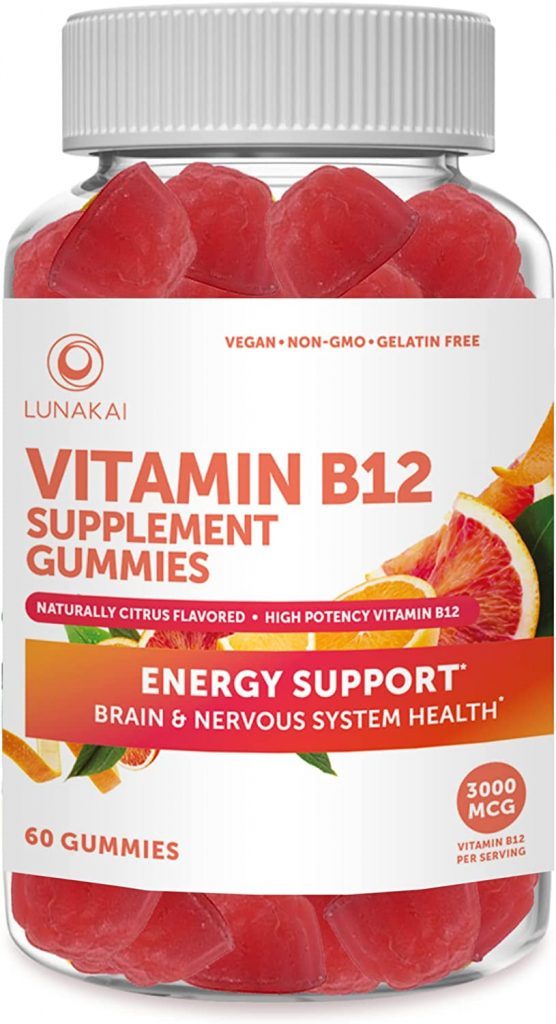
#B12#VitaminB12#EnergyBoost#BrainFunction#CognitiveHealth#Vitality#NervousSystem#Supplements#HealthBenefits#Fatigue#Wellness#Nutrition#VitaminDeficiency#EnergyProduction#BrainHealth
0 notes
Text
What is Vitamin B12

B12 Vitamin - The Essential Nutrient for Optimal Health B12 Vitamin, also known as cobalamin, is a water-soluble vitamin that plays a crucial role in the proper functioning of the nervous system, the production of red blood cells, and the metabolism of fats and carbohydrates. It is one of the eight essential B vitamins and is required in small amounts to maintain good health. In this article, we will explore the benefits, food sources, and potential risks associated with B12 Vitamin. What are the Benefits of B12 Vitamin? - Supports Brain and Nervous System Functioning: B12 Vitamin is essential for the proper functioning of the brain and nervous system. It helps to maintain the myelin sheath, a protective covering on nerve fibres that ensures the smooth transmission of nerve impulses. A deficiency in B12 Vitamin can lead to neurological symptoms such as numbness, tingling, and memory loss. - Reduces Risk of Anemia: B12 Vitamin is necessary for the production of red blood cells. It works together with folate to ensure that the body has enough healthy red blood cells to carry oxygen to the organs and tissues. A deficiency in B12 Vitamin can lead to a condition called megaloblastic anemia, which is characterized by the production of abnormally large and immature red blood cells. - Promotes Energy Production: B12 Vitamin is essential for the metabolism of fats and carbohydrates, which are the primary sources of energy for the body. It helps to convert food into glucose, which is then used by the cells to produce energy. A deficiency in B12 Vitamin can lead to fatigue, weakness, and poor endurance. What are the Food Sources of B12 Vitamin? B12 Vitamin is naturally found in animal products such as meat, fish, poultry, eggs, and dairy products. Vegetarians and vegans are at a higher risk of B12 Vitamin deficiency as they do not consume these animal products. However, they can obtain B12 Vitamin from foods that are fortified with it, such as cereals, plant-based milk, and nutritional yeast. Supplements are also available in the form of tablets, capsules, or injections. What are the Potential Risks of B12 Vitamin? B12 Vitamin is generally considered to be safe for most people when taken in recommended doses. However, excessive consumption of supplements can lead to potential risks such as: - Skin Rash: Some people may develop a skin rash after taking B12 Vitamin supplements. This is usually a mild and temporary side effect that may resolve on its own. - Upset Stomach: B12 Vitamin supplements can cause an upset stomach, diarrhoea, or constipation in some people. This can be avoided by taking the supplement with food. - Allergic Reactions: In rare cases, some people may develop an allergic reaction to B12 Vitamin supplements. Symptoms may include itching, swelling, and difficulty breathing. If you experience any of these symptoms, seek medical attention immediately. Conclusion B12 Vitamin is an essential nutrient that plays a crucial role in the proper functioning of the nervous system, the production of red blood cells, and the metabolism of fats and carbohydrates. It is important to ensure that you get enough B12 Vitamin by consuming a balanced diet that includes animal products, or by taking supplements if necessary. Consult with your healthcare provider before starting any supplement regimen to avoid potential risks. Stay healthy and happy by including B12 Vitamin in your diet! Tags: B12 Vitamin, cobalamin, nervous system, red blood cells, anemia, energy production, food sources, supplements, risks, skin rash, upset stomach, allergic reactions. Read the full article
#allergicreactions#anemia#B12Vitamin#cobalamin#energyproduction#foodsources#nervoussystem#redbloodcells#risks#skinrash#supplements#upsetstomach#WhatisVitaminB12
0 notes
Link
👋 Are you feeling sluggish and tired all the time? It might be time to consider the Mito diet! This diet focuses on boosting energy levels and improving overall health by targeting the mitochondria in our cells. 🧬 The Mito diet is based on the science of mitochondrial function and aims to support the body's natural energy production. By eating foods that are high in nutrients and antioxidants, the diet can help improve cellular health and reduce inflammation. 🍎 Some of the key foods included in the Mito diet are leafy greens, berries, nuts, and healthy fats. By incorporating these foods into your diet and avoiding processed foods and sugar, you can improve your energy levels and overall health. Ready to give it a try? Keep reading to learn more about the Mito diet!1. Understanding the Mito Diet: What is it and how does it work?The Mito diet is a low-carb, high-fat diet designed to improve mitochondrial function. It involves eating healthy fats, moderate protein, and low carbs. The diet aims to reduce inflammation and oxidative stress, which can damage the mitochondria. By improving mitochondrial function, the Mito diet can boost energy levels and improve overall health. The Mito diet works by promoting the production of ketones, which are produced when the body burns fat for energy. Ketones provide a more efficient source of energy for the body and brain. They also reduce inflammation and oxidative stress, which can improve mitochondrial function. The Mito diet also encourages the consumption of foods high in antioxidants and nutrients that support mitochondrial health. Some of the foods recommended on the Mito diet include: Healthy fats like avocado, coconut oil, and olive oil. Low-carb vegetables like spinach, kale, and broccoli. Protein sources like grass-fed beef, wild-caught fish, and organic chicken. Herbs and spices like turmeric, ginger, and garlic. Overall, the Mito diet is a science-backed approach to improving mitochondrial function and overall health. 👍🍎🥦🍗🥑🐟2. The Science behind the Mito Diet: How it boosts energy and improves healthDiscover the science behind the Mito Diet and how it can boost your energy levels and improve your overall health. The Mito Diet is based on the principle of eating foods that fuel your mitochondria, the powerhouses of your cells. By providing your body with the right nutrients, you can optimize your mitochondria's function and increase your energy levels. The Mito Diet is also rich in antioxidants and anti-inflammatory compounds, which can help reduce oxidative stress and inflammation in your body. Studies have shown that the Mito Diet can improve cognitive function, reduce the risk of chronic diseases, and even slow down the aging process. The Mito Diet emphasizes whole, nutrient-dense foods, such as fruits, vegetables, nuts, and seeds. It also limits processed foods, sugar, and refined carbohydrates, which can lead to inflammation and oxidative stress. By following the Mito Diet, you can optimize your body's energy production and improve your overall health and well-being. 👍 Give it a try and see how it can benefit you!3. The Benefits of the Mito Diet: From weight loss to disease preventionThe Mito Diet is a high-fat, low-carb diet that focuses on increasing the number of healthy mitochondria in your body, which can lead to numerous benefits. Weight loss: The Mito Diet can help you shed unwanted pounds by promoting fat burning and reducing hunger. Improved energy: By increasing the number of mitochondria in your cells, the Mito Diet can boost your energy levels. Reduced inflammation: The Mito Diet can help reduce inflammation in the body, which is linked to many chronic diseases. Better brain function: The Mito Diet may improve cognitive function and reduce the risk of neurodegenerative diseases. Lower risk of heart disease: The Mito Diet can reduce risk factors for heart disease, such as high blood pressure and cholesterol levels. Overall, the Mito Diet is a powerful tool for improving your health and preventing disease. Give it a try and see the benefits for yourself! 🍎🥑🥩4. Foods to Eat and Avoid on the Mito Diet: A comprehensive guideFoods to Eat on the Mito Diet: Leafy greens 🥬 Wild-caught fish 🐟 Pasture-raised meats 🐄 Organic berries 🍓 Healthy fats like avocado 🥑 Low-carb vegetables 🥦 Foods to Avoid on the Mito Diet: Processed foods 🚫 Refined sugars 🍭 Grains and gluten 🌾 Dairy 🐄 Artificial sweeteners 🙅♀️ Trans fats 🍔 Why These Foods? Leafy greens and wild-caught fish are high in antioxidants and omega-3s, while pasture-raised meats are free from antibiotics and hormones. Organic berries provide fiber and vitamins, and healthy fats like avocado support brain health. Low-carb vegetables are nutrient-dense and low in sugar. Processed foods, refined sugars, and grains can cause inflammation and damage to mitochondria. Dairy and artificial sweeteners can also be inflammatory, while trans fats are linked to heart disease and other health issues. 5. Tips for Success on the Mito Diet: How to stay motivated and on trackStaying motivated and on track with the Mito diet can be challenging, but these tips can help: Set achievable goals and track progress Find a support system Plan meals and snacks in advance Try new recipes and food combinations Stay positive and celebrate small victories 🎉 Remember to listen to your body and adjust as needed. Don't be too hard on yourself and take breaks when necessary. Stay inspired by reading success stories and connecting with others on social media. Keep healthy snacks on hand for when cravings strike and stay hydrated. Finally, prioritize self-care and get enough sleep. Your body will thank you. 💤6. The Mito Diet and Exercise: How to maximize your resultsWhen following the Mito diet, it's important to incorporate exercise to maximize your results. Here are some tips: Start with low-intensity workouts and gradually increase intensity Include a mix of cardio and strength training Try high-intensity interval training (HIIT) for maximum fat burning Don't forget to stretch and warm-up before exercising Pairing the Mito diet with exercise can help improve mitochondrial function and increase energy levels. Here are some foods to eat: Leafy greens like spinach and kale Healthy fats like avocado and nuts Lean proteins like chicken and fish Complex carbs like sweet potatoes and quinoa It's important to stay hydrated while exercising on the Mito diet. Aim for at least 8 glasses of water a day. Here are some additional tips: Avoid sugary sports drinks and opt for water or coconut water instead Drink water before, during, and after exercise Consider adding electrolytes to your water for added hydration Remember to listen to your body and adjust your exercise routine as needed. Consistency is key for seeing results on the Mito diet and exercise plan. 🏋️♀️💪7. Common Myths about the Mito Diet: Debunking misconceptions and setting the record straightThere are several misconceptions about the Mito diet that need to be addressed. Let's debunk them and set the record straight. Myth: The Mito diet is a fad. Fact: The Mito diet is based on scientific research and has been proven to improve mitochondrial function. Myth: The Mito diet is only for people with mitochondrial diseases. Fact: The Mito diet can benefit anyone looking to improve their energy levels and overall health. Myth: The Mito diet is too restrictive. Fact: While the Mito diet does eliminate certain foods, it still allows for a variety of nutrient-dense options. Myth: The Mito diet is a high-fat diet. Fact: The Mito diet emphasizes healthy fats, but also includes a balance of protein and carbohydrates. Myth: The Mito diet is difficult to follow. Fact: With proper planning and preparation, the Mito diet can be easily incorporated into a daily routine. Myth: The Mito diet is expensive. Fact: While some Mito-friendly foods may be pricier, the diet can still be affordable with smart shopping and meal planning. Don't let these myths discourage you from trying the Mito diet. It's a scientifically-backed approach to improving your health and energy levels. In conclusion, the Mito diet is a scientifically-backed approach to improving energy and overall health. By focusing on nutrient-dense foods and avoiding processed and inflammatory foods, the Mito diet can help support mitochondrial function and reduce oxidative stress. Incorporating foods like leafy greens, healthy fats, and antioxidant-rich fruits can provide the body with the necessary nutrients to support energy production and cellular health. Additionally, the Mito diet emphasizes the importance of regular exercise and stress management to further support mitochondrial function. Overall, the Mito diet offers a holistic approach to improving energy and health. With its emphasis on whole, nutrient-dense foods and lifestyle factors, the Mito diet is a sustainable and effective way to support mitochondrial function and promote overall well-being. 🍎🏋️♀️💆♂️ https://fastdiet.net/the-mito-diet-boosting-energy-and-health/?_unique_id=6476895c436b9
#Uncategorised#cellularfunction#energyproduction#Mitodiet#mitochondrialhealth#nutrientdensefoods#aiomatic_0
0 notes
Photo

🔆☀️ If you're curious about measuring the output of your solar panel system, we've got you covered. Learn more about the tools and techniques used to calculate your energy production and optimize your solar energy savings. ☀️📈 https://freyrenergy.com/how-can-we-measure-the-output-of-a-solar-panel-system/
0 notes
Text

Coenzyme Q10 (CoQ10) supports heart health through various mechanisms, as evidenced by numerous studies:
Antioxidant Properties: CoQ10 acts as a potent antioxidant, protecting the heart from oxidative damage caused by free radicals.
Energy Production: CoQ10 plays a crucial role in cellular energy production, particularly in the heart muscle, which requires high energy levels for proper functioning.
Blood Pressure Regulation: Some studies suggest that CoQ10 supplementation can help lower blood pressure, which is a significant risk factor for heart disease.
Improvement in Heart Failure Symptoms: Research indicates that CoQ10 supplementation can improve symptoms and quality of life in individuals with heart failure by enhancing heart function and reducing inflammation.
Reduction in Statin Side Effects: Statin medications, commonly prescribed for cholesterol management, can deplete CoQ10 levels in the body. Supplementing with CoQ10 may alleviate some of the side effects associated with statin use, such as muscle pain and weakness.
Improved Endothelial Function: CoQ10 may enhance endothelial function, promoting better blood vessel health and circulation, which is essential for overall cardiovascular wellness.
Overall, the body of evidence suggests that CoQ10 supplementation can be a valuable adjunctive therapy for supporting heart health and may benefit individuals with various cardiovascular conditions. However, it's essential to consult with a healthcare professional before starting any supplementation regimen, especially if you have existing heart conditions or are taking medications.
#CoenzymeQ10#CoQ10#Antioxidant#EnergyProduction#CellularHealth#ATP#FreeRadicalProtection#NutritionalHealth#Wellness#HealthSupplement#CellularEnergy#OxidativeStress#NaturalAntioxidant#HealthyLiving#BodyWellness#CellularFunction#EnergyBoost#HealthNutrient#FreeRadicalDefense#Vitality
0 notes
Text
Condition Monitoring of Solar Power Plants | Rugged Monitoring
RM’s condition monitoring systems perform more efficiently to cater the needs of solar power industry. It facilitates planned maintenance with deep insight into the component failures before they affect energy production.
0 notes
Text

Redox reactions
Redox reactions, short for reduction-oxidation reactions, are fundamental chemical processes where the transfer of electrons between substances leads to changes in their oxidation states. In these reactions, one substance undergoes oxidation, meaning it loses electrons, while another undergoes reduction, gaining electrons. These reactions play a vital role in many natural and industrial processes, such as energy production in batteries, combustion, photosynthesis, and the corrosion of metals. For example, during combustion, fuel is oxidized, and oxygen is reduced. In photosynthesis, plants reduce carbon dioxide to form glucose, while oxygen is released. Redox reactions are not only essential in biological systems but also in various technological applications, including fuel cells, corrosion prevention, and industrial processes.
International Chemistry Scientist Awards
Website: chemistryscientists.org
Contact us: [email protected]
Nominate now: https://chemistryscientists.org/award-nomination/?ecategory=Awards&rcategory=Awardee
#sciencefather#researchawards#Professor,#Lecturer,#Scientist,#Scholar,#Researcher#RedoxReactions #Oxidation #Reduction #ElectronTransfer #ChemicalReactions #EnergyProduction #Photosynthesis #Combustion #Corrosion #Science #Chemistry #ChemicalProcesses #EnvironmentalScience #BatteryTech #Electrochemistry
👉 Don’t forget to like, share, and subscribe for more exciting content!
Get Connected Here: =============
Blogger : https://www.blogger.com/blog/post/edit/6961521080043227535/467226973388921229
Twitter : https://x.com/chemistryS79687
Pinterest : https://in.pinterest.com/chemistryaward/
Instagram: https://www.instagram.com/alishaaishu01/
Youtube : https://www.youtube.com/channel/UCAD_pDvz3ZHqv_3hf-N0taQ
0 notes
Text
As a UL508A Custom Panel Shop & BEBS Battery Emergency Backup System Manufacturer, Applied Gray Matter is proficient in designing and building custom UL control panels for a wide range of industries and applications, ensuring top-notch quality and efficiency.

The Industries We Consult With :
* Automated Parking
* Agriculture
* Aerospace
* Automotive
* Defense
* Oil and Gas
* Waste Management
* Water and Sewer Management
* Energy Production
* Environmental Monitoring
Get Started
Does your project require a custom control panel?
Schedule a consultation with the Applied Gray Matter sales team for a free estimate.
https://AppliedGrayMatter.com
#controlpanels #controlpaneldesign #controlpanelmanufacturers #ul508panels
#ul508panelshop #ul508manufacturers #aerospacepanels #automotivepanels #defensePaneld #WasteManagementPanels #watermanagement #sewermanagement #energyproductionpanels #environmentalmonitoring #oilproductionpanels #gasproductionpanels #automatedparkingcontrolpanels
AppliedGrayMatter.com


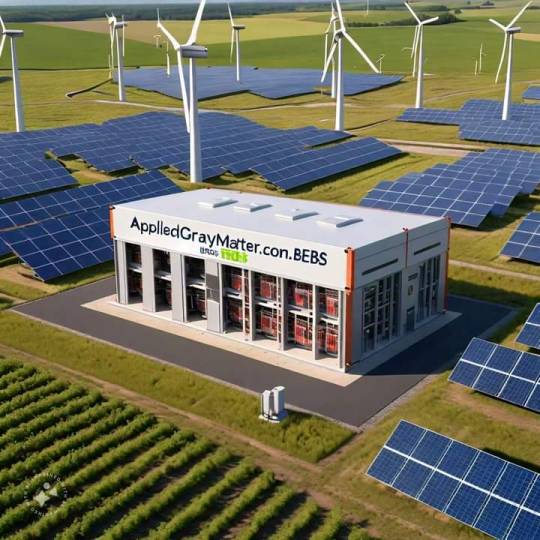

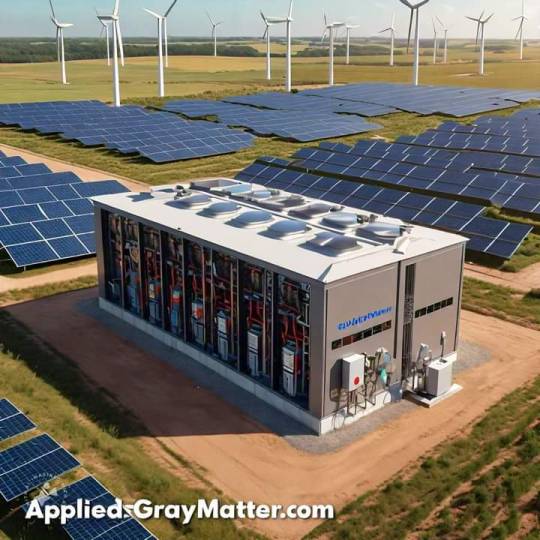
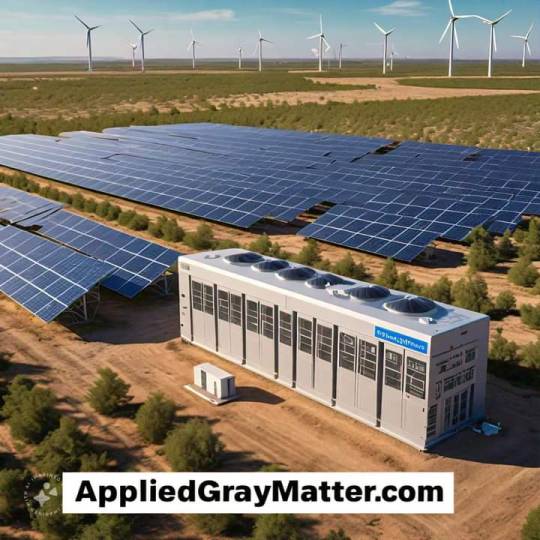

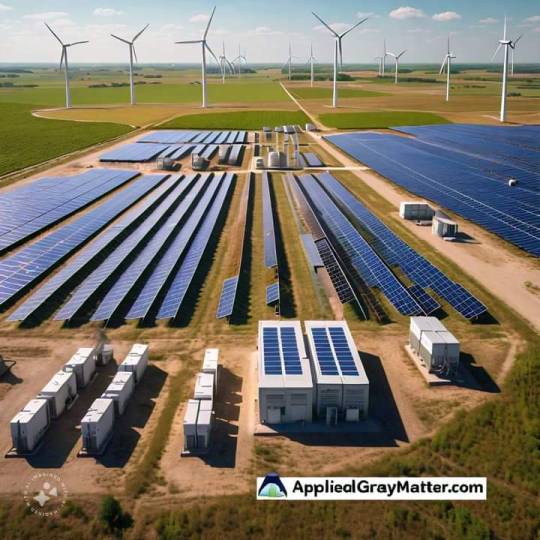

#controlpanels #controlpaneldesign #ControlPanelManufacturer #energyproduction
#contol panels#applied gray matter#agriculture#manufacturer of customs bebs battery emergency backup systems#ul508 control panel designer and manufacturer
0 notes
Photo

Explore the meaning of fracking, how it works, and its pros and cons. Understand the impact of this energy extraction method on the environment and economy. read the full article: https://bit.ly/3Bbed8o #Fracking #HydraulicFracturing #EnergyProduction #EnvironmentalImpact #OilExtraction #GasExtraction read more: what is fracking mean
0 notes